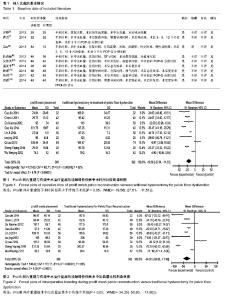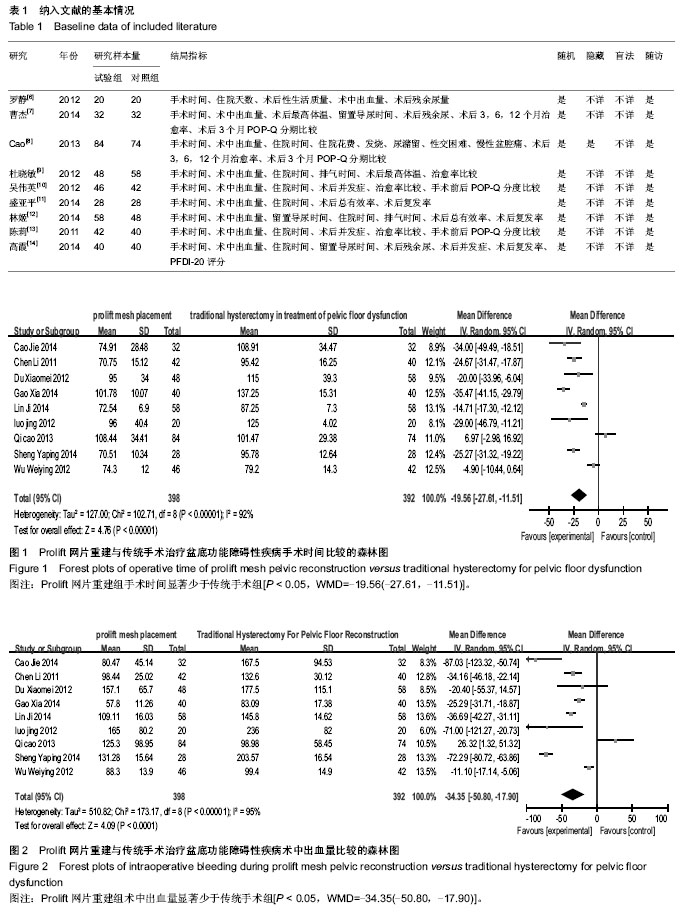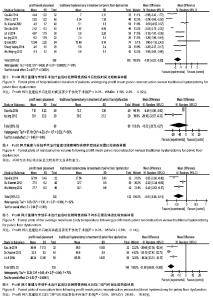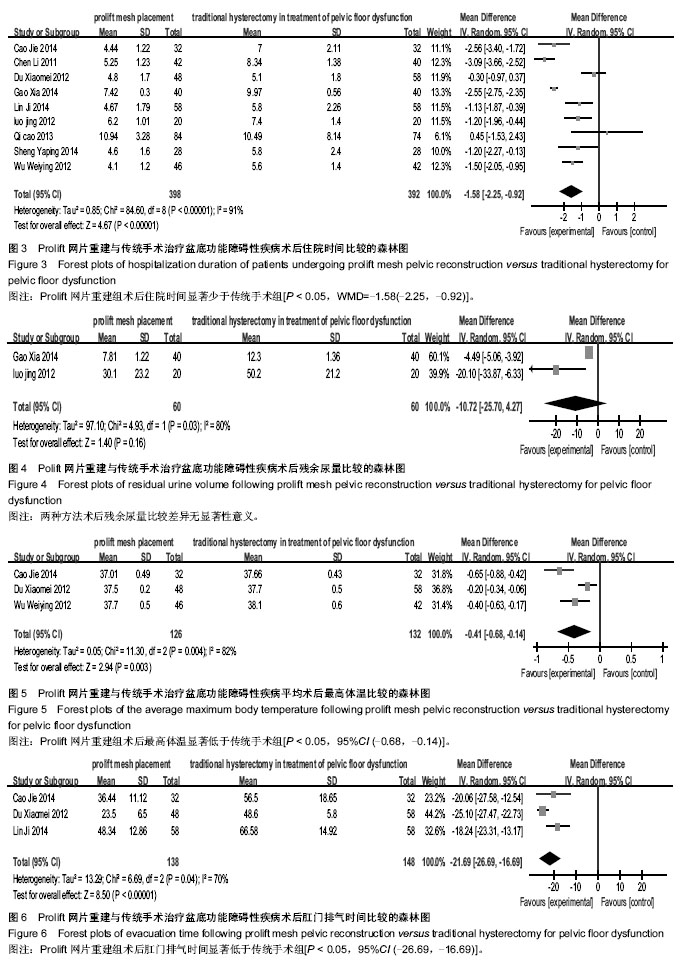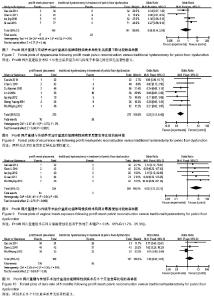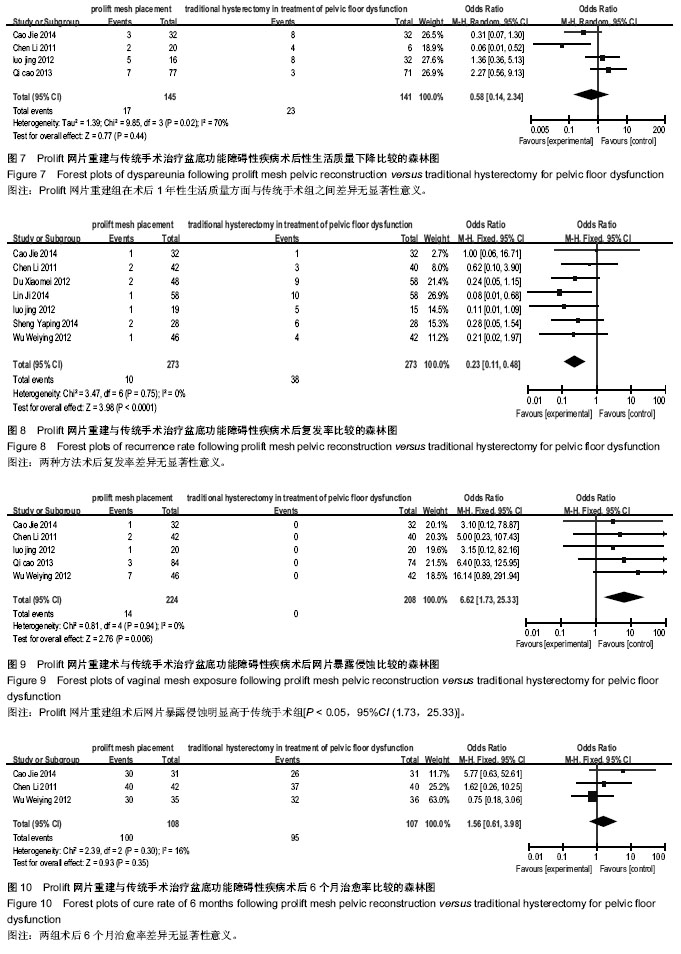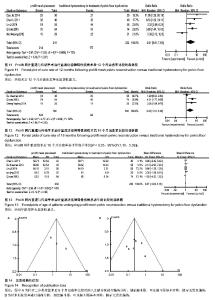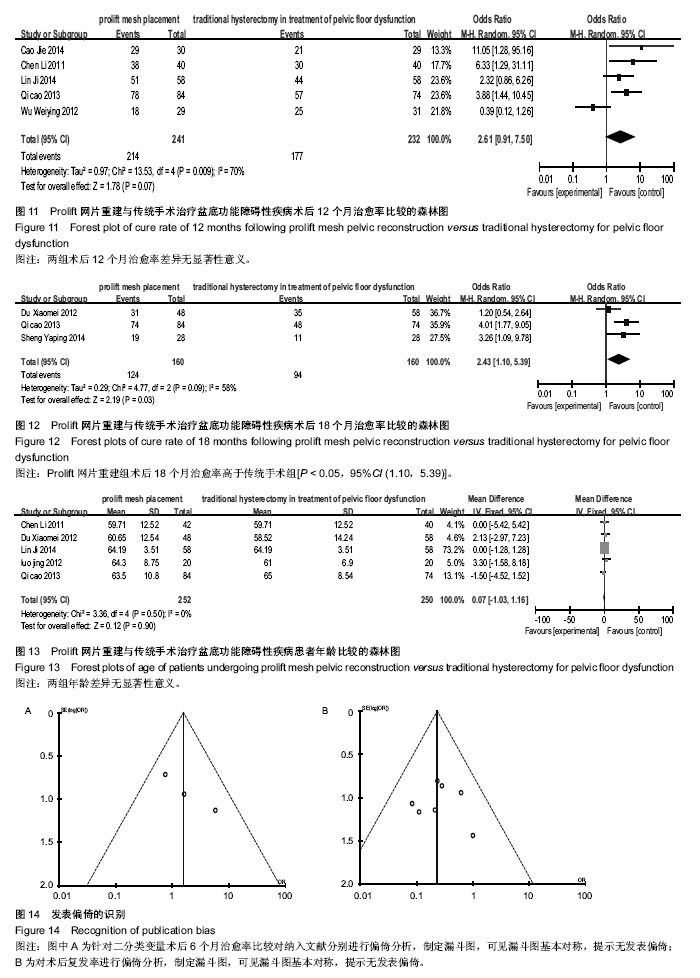| [1] 谢幸,苟文丽.妇产科学[M].8版.北京:人民卫生出版社,2013:8.
[2] Bump RC,Mattiasson A,Bo K,et al.The standardization of terminology of female pelvic organ prolapse and pelvic floor dysfunction.Am J Obstet Gynecol.1996;175(1):10-17.
[3] Wells GA,Shea B,O’Connell D,et al.The Newcastle-Ottawa Scale(NOS) for assessing the quality of nonrandomized studies in meta-analyses[EB/OL]. http://ohri.ca/programs/clinical-epidemiology/oxford.asp.
[4] Jadad AR,Moore RA,Carroll D,et al.Assessing the quality of reports of randomized clinical trials:is blinging necessary? Control Clin Trails.1996;17:1-12.
[5] Handa VL,Garrett E,Hendrix S,et al.Progression and remission of pelvic organ prolapse: a longitudinal study of men opausal women.Am Obstet Gynecol.2004;190(1):27-32.
[6] 罗静,彭桂华.Prolift盆底重建术与传统术式治疗盆腔脏器脱垂的临床比较[J].中国现代医药杂志,2014,14(12):26-29.
[7] 曹杰,赵纯全.Prolift 系统盆底重建术与常规阴式手术治疗盆腔器官脱垂的临床分析[J].重庆医学,2014,43(15):1871-1874.
[8] Cao Q,Chen YS,Ding JX,et al.Long-term treatment outcomes of transvaginal mesh surgery versus anterior–posterior colporrhaphy for pelvic organ prolapsed.Aust N Z J Obstet Gynaecol.2013;53:79-85.
[9] 杜晓梅,焦榕芳,李爱青,等.改良盆底重建术治疗盆腔脏器脱垂临床疗效观察[J].中国医药科学,2012,2(23):63-64.
[10] 吴伟英.改良式Prolift前盆重建术46例临床分析[J].中国妇幼保健,2012,27(11):1728-1730.
[11] 盛亚平.盆底重建术与传统阴式子宫切除加阴道前后壁修补术治疗子宫脱垂疗效比较[J].中国实用医刊,2014,41(13):20-21.
[12] 林姬,杨妮.盆底重建术治疗盆底功能障碍的疗效观察[J].现代诊断与治疗,2014,25(7):1481-1482.
[13] 陈莉,邱娜璇.全盆底补片悬吊术与传统阴式手术治疗重度盆腔器官脱垂 的临床分析[J].中国妇幼保健,2011,26(12): 1883-1886.
[14] 高霞,张红宇.全盆底重建术与传统阴式修补术治疗重度盆腔器官脱垂的近期疗效观察[J].河北医学,2014,20(10):1625-1628.
[15] Clark AL,Gregory T,Smith VJ,et al.Epidemiologic evaluation of reoperation for surgically treated pelvic organ prolapse and urinary incontinence.Am J Obstet Gynecol.2003;189(5): 1261-1267.
[16] Maher CM,Feiner B,Baessler K,et al.Surgical management of pelvic organ prolapse in women: the updated summary version Cochrane review.Int Urogynecol J.2011;22(11): 1445-1457.
[17] Karlovsky ME,Thakre AA,Rastinehad A,et al.Biomaterials for pelvic floor reconstruction.Urology.2005;66(3):469-475.
[18] Reisenauer C,Viereck V.Mesh-related complication in urogynecology-a multidisciplinary challenge.Acta Obstet Gynecol Scand.2012;91(7):869-872. |
